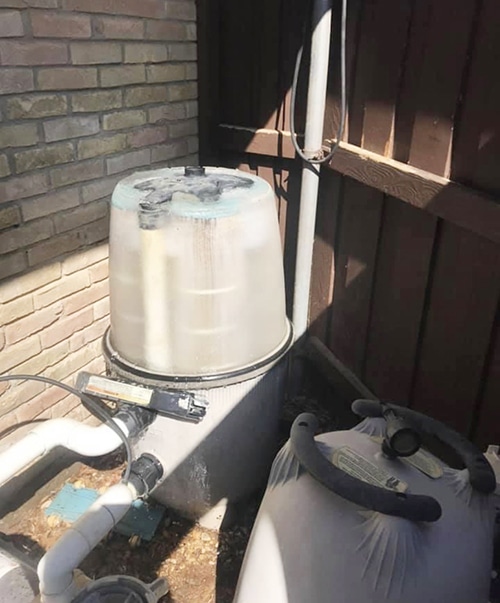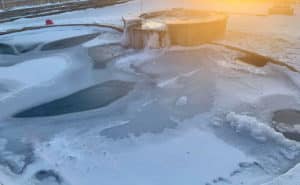 Frozen Pool Challenges
Frozen Pool Challenges
Dealing with winter weather and freezing temperatures can be more than just an inconvenience, especially for swimming pool owners.
Frozen pipes, loss of electricity, and excessive winds can damage your pool and create the ideal environment for expensive repairs.
You can avoid a frozen pool if you treat it correctly before frosty temperatures strike. Taking the steps to winterize your pool before serious weather events occur can save you headaches and stress on your finances.
Nevertheless, if you’ve neglected to take the necessary precautions or intense weather arrives unexpectedly, you can still take steps to help protect your frozen pool.
Pool pipes located above the ground are susceptible to freeze. Water that is not moving through the pipes can turn to ice which expands to fill every available air space inside the pipes and your equipment. If the expansion continues, it can crack not just the pipes, but valves, pumps, filters, and heaters.
Ideally, you should run your pump when temperatures dip below 32 degrees, especially if the temperature continues to remain below that 32-degree mark. The pump should be run continuously. Since moving water cannot freeze, keeping the water in motion is important.
However, if you suspect that you have a frozen pool, it is imperative that you do not turn it on if it has been off! If your pool has not been running, now is not the time to flip the switch to “on”. Turning a pool on once it has frozen can cause damage to the pool and is an unsafe practice.
You MUST wait until there’s a thaw, before turning on pool equipment, or you risk permanent damage and possible injury!
If you can’t run the equipment due to a power failure, shut off the power to your pool system. Locate the power box and turn off the breakers. Locate the filter cartridge, and release the air via the top of the filter.
Remove all drain plugs on the pool equipment, to quickly drain out any water (you can store the plugs in your pump basket temporarily), then cover the equipment with heavy blankets. You can also wrap the above-ground PVC plumbing with a heating cable for pipes, which can protect the pipes from freezing. To ensure safety, do not cover the heater itself.
When power returns, replace the plugs and go back to the breaker box. Turn your equipment back on and put the pool back into auto mode.
At this point, if your pool is not running, you may need to prime your pump. Put the pool back into service mode. Insert a garden hose into the top of the pump and allow the pump basket to fill with water. Once it is full, remove the hose and tighten the pump’s lid. Put the pool back into auto mode to get it running.
 Frozen Pool Surface
Frozen Pool Surface
You may be tempted to break up the ice on the surface of your frozen pool water, but doing so can cause damage to tile, liners, and surfaces. Having ice on the top of your pool is not harmful, so allow it to dissipate on its own.
IMPORTANT SAFETY PRECAUTION! 
If you have determined that you require assistance with addressing your frozen pool, or if you’re still experiencing issues after you’ve taken the steps above, do not fully drain your pool. While you may temporarily experience green pool water or other less than ideal conditions, draining the pool can compromise the structure and cause thousands of dollars in damages.
If you’re faced with a frozen pool or you have pool care questions, contact your local Premier Pool Service Provider today. We offer free quotes and peace of mind.
Get a FREE quote
Looking to build a brand new swimming pool or add a spa or water feature to your existing pool? Check out our fantastic pool designs at premierpoolsandspas.com.

 Frozen Pool Challenges
Frozen Pool Challenges Frozen Pool Surface
Frozen Pool Surface


